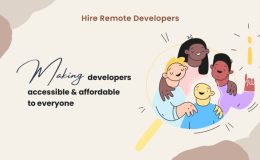The gaming industry has seen remarkable advancements in recent years, with technology constantly pushing the boundaries of what is possible. In a significant development, Unity, the leading game development platform, has unveiled its beta version of PolySpatial, a development platform designed specifically for Apple’s revolutionary “spatial computing” platform, Vision Pro. This move aims to empower developers to create immersive 3D experiences for Apple’s latest hardware offering.
Unity Create president, Marc Whitten, acknowledges the challenges of building applications for a device that promises to redefine computing as we know it. The goal was to create a platform that allows Unity applications to exist in a shared space with other applications, seamlessly integrating with Apple’s Reality Kit and visionOS. This means that Unity doesn’t just run on Vision Pro but can be placed inside real space alongside other experiences, whether they are Unity-based, RealityKit, or other Apple offerings.
While gaming has traditionally been a significant driver for computing platforms, the WWDC keynote hinted at a different focus for Vision Pro. Apple positioned the product more as a productivity device, highlighting office and creative workflows, with a dash of enterprise applications. However, gaming is not entirely forgotten. Unity-based apps and games will run natively on Vision Pro, leveraging groundbreaking visionOS features like low latency pass-through and high-resolution rendering.
Unity’s PolySpatial is expected to play a crucial role in porting existing titles to the new Vision Pro platform. Building new experiences from scratch can be resource-intensive, making the ability to repurpose content a valuable asset. An excellent example of this is the game “What the Golf?,” which was successfully ported to Vision Pro using PolySpatial. Unity’s multi-platform support and comprehensive development tools allowed the game’s developer, Triband, to repurpose content and create an engaging experience for Vision Pro users.
With the release of Vision Pro scheduled for early next year, Unity understands the need to provide developers with ample time to create experiences for the hardware. The limited beta release of PolySpatial allows interested developers to start creating content and provides Unity with valuable feedback to refine and improve the platform. Unity’s close collaboration with creators throughout the process ensures that workflow challenges and support issues are addressed promptly, making it easier for developers to bring their visions to life.
Unity is taking a democratic approach to the beta release, focusing on AAA developers and soliciting feedback from a diverse range of users. By prioritizing feedback, Unity aims to enhance the development platform and make it more accessible to all creators. This approach aligns with Unity’s commitment to supporting developers at every stage of their creation, from beta testing to scaling out the platform.
Unity’s robust authoring tools have attracted a massive community of developers who have already built incredible 3D experiences. With Unity-based apps and games running natively on Vision Pro, developers can access groundbreaking features that can elevate their creations to new heights. The combination of Unity’s extensive capabilities and Apple’s innovative visionOS opens up a world of possibilities for developers to create cutting-edge experiences for Vision Pro users.
In summary, the partnership between Unity and Apple brings forth a game development tool, PolySpatial, that empowers developers to create immersive 3D experiences for Apple’s Vision Pro. By addressing the challenges of developing for a paradigm-shifting device, Unity’s platform enables Unity-based apps to coexist with other applications in real space. While gaming took a backseat in the WWDC keynote, Unity’s robust development tools and the availability of PolySpatial provide opportunities for developers to create groundbreaking gaming experiences on Vision Pro. With the limited beta release, Unity invites developers from all backgrounds to participate, ensuring that the platform meets the diverse needs of creators. As the release of Vision Pro draws closer, Unity’s commitment to supporting developers and refining its platform positions it as a leader in the gaming industry, pushing the boundaries of what is possible in spatial computing.
First reported on TechCrunch
Frequently Asked Questions
Q. What is PolySpatial, and why is it significant for Apple’s Vision Pro?
PolySpatial is a development platform created by Unity, the leading game development platform. It is designed specifically for Apple’s spatial computing platform, Vision Pro. PolySpatial empowers developers to create immersive 3D experiences for Vision Pro, allowing Unity applications to exist in a shared space with other applications, seamlessly integrating with Apple’s Reality Kit and visionOS.
Q. How does PolySpatial enhance the gaming experience on Vision Pro?
PolySpatial enables Unity-based apps and games to run natively on Vision Pro, leveraging groundbreaking features like low latency pass-through and high-resolution rendering from visionOS. This ensures that gaming experiences on Vision Pro are engaging, and immersive, and take full advantage of the hardware’s capabilities.
Q. What role does Unity’s multi-platform support play in content creation for Vision Pro?
Unity’s multi-platform support allows developers to repurpose content from existing titles for the new Vision Pro platform. This feature is valuable as building new experiences from scratch can be resource-intensive, and repurposing content helps streamline the content creation process.
Q. Can you provide an example of a successful port to Vision Pro using PolySpatial?
The game “What the Golf?” by Triband is an excellent example of a successful port to Vision Pro using PolySpatial. Unity’s comprehensive development tools and multi-platform support enabled Triband to repurpose content and create an engaging experience for Vision Pro users.
Q. When will Apple’s Vision Pro be released, and why is Unity releasing PolySpatial in beta now?
Apple’s Vision Pro is scheduled for an early release next year. Unity’s limited beta release of PolySpatial provides developers with ample time to create content for the hardware. It offers valuable feedback to refine and improve the platform before the official release.
Q. How is Unity collaborating with developers during the beta release of PolySpatial?
Unity is taking a democratic approach to the beta release, focusing not only on AAA developers but also on soliciting feedback from a diverse range of users. Unity’s commitment to supporting developers at every stage, from beta testing to scaling out the platform, ensures that workflow challenges and support issues are addressed promptly.
Q. What are some groundbreaking features in Apple’s visionOS that benefit Unity developers?
Apple’s visionOS provides features like low latency pass-through and high-resolution rendering that elevate the gaming experience for Unity developers on Vision Pro. These features enhance visual quality, reduce latency, and create a more immersive environment for users.
Q. How does Unity’s commitment to supporting developers position them as a leader in the gaming industry?
Unity’s robust authoring tools and commitment to refining its platform demonstrate its dedication to supporting developers’ needs. By providing a versatile and accessible development platform, Unity empowers creators to push the boundaries of what is possible in spatial computing and become leaders in the gaming industry.
Q. Can developers from all backgrounds participate in the PolySpatial beta release?
Yes, Unity invites developers from all backgrounds to participate in the PolySpatial beta release. Their democratic approach ensures that the platform meets the diverse needs of creators and provides opportunities for developers with varying levels of experience to contribute to its improvement.
Q. What does the partnership between Unity and Apple mean for the future of gaming and spatial computing?
The partnership between Unity and Apple signifies a significant step forward for gaming and spatial computing. It empowers developers to create cutting-edge gaming experiences on Vision Pro. With Unity’s extensive capabilities and Apple’s innovative visionOS, the future holds exciting possibilities for immersive 3D experiences in spatial computing.
Featured Image Credit: Zhang Kaiyv; Unsplash; Thank you!


















